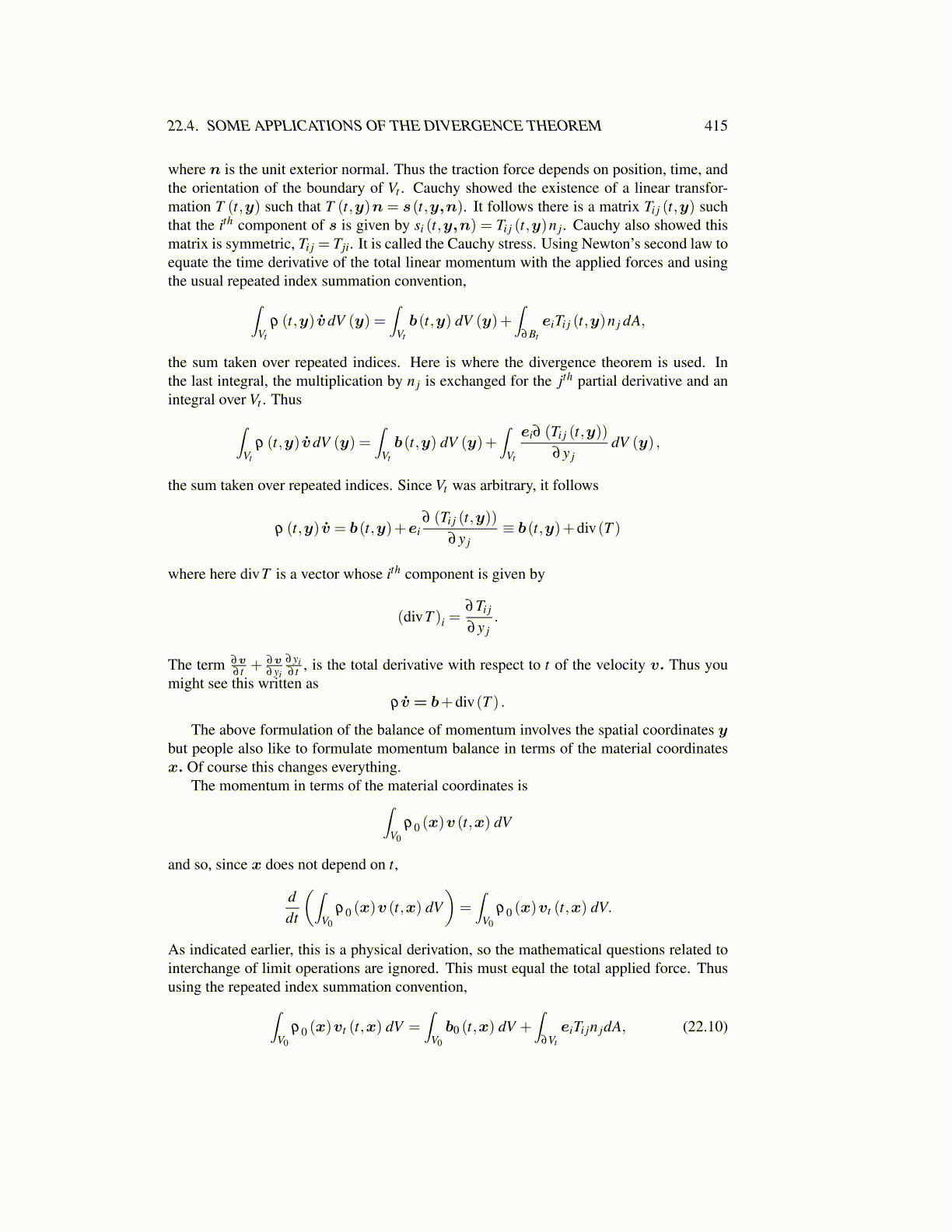
22.4. SOME APPLICATIONS OF THE DIVERGENCE THEOREM 415
where n is the unit exterior normal. Thus the traction force depends on position, time, andthe orientation of the boundary of Vt . Cauchy showed the existence of a linear transfor-mation T (t,y) such that T (t,y)n = s(t,y,n). It follows there is a matrix Ti j (t,y) suchthat the ith component of s is given by si (t,y,n) = Ti j (t,y)n j. Cauchy also showed thismatrix is symmetric, Ti j = Tji. It is called the Cauchy stress. Using Newton’s second law toequate the time derivative of the total linear momentum with the applied forces and usingthe usual repeated index summation convention,∫
Vt
ρ (t,y) v̇dV (y) =∫
Vt
b(t,y) dV (y)+∫
∂Bt
eiTi j (t,y)n j dA,
the sum taken over repeated indices. Here is where the divergence theorem is used. Inthe last integral, the multiplication by n j is exchanged for the jth partial derivative and anintegral over Vt . Thus∫
Vt
ρ (t,y) v̇dV (y) =∫
Vt
b(t,y) dV (y)+∫
Vt
ei∂ (Ti j (t,y))∂y j
dV (y) ,
the sum taken over repeated indices. Since Vt was arbitrary, it follows
ρ (t,y) v̇ = b(t,y)+ei∂ (Ti j (t,y))
∂y j≡ b(t,y)+div(T )
where here divT is a vector whose ith component is given by
(divT )i =∂Ti j
∂y j.
The term ∂v∂ t +
∂v∂yi
∂yi∂ t , is the total derivative with respect to t of the velocity v. Thus you
might see this written asρv̇ = b+div(T ) .
The above formulation of the balance of momentum involves the spatial coordinates ybut people also like to formulate momentum balance in terms of the material coordinatesx. Of course this changes everything.
The momentum in terms of the material coordinates is∫V0
ρ0 (x)v (t,x) dV
and so, since x does not depend on t,
ddt
(∫V0
ρ0 (x)v (t,x) dV)=∫
V0
ρ0 (x)vt (t,x) dV.
As indicated earlier, this is a physical derivation, so the mathematical questions related tointerchange of limit operations are ignored. This must equal the total applied force. Thususing the repeated index summation convention,∫
V0
ρ0 (x)vt (t,x) dV =∫
V0
b0 (t,x) dV +∫
∂Vt
eiTi jn jdA, (22.10)